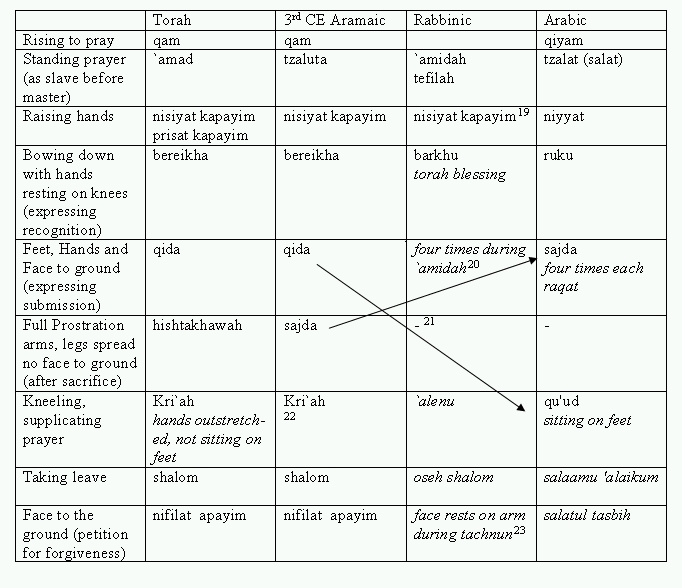Appendix II. Linguistic Derivations
[19] Originally arms were raised during pesukei dizimrei. This was discontinued when the Temple was destroyed.. This custom still survives in Jewish custom when raising hands for shema and ashrei prayer.
[20] When the Temple was destroyed, in the Land of Israel qida became slight movements of knees and head. It continued in Babylon as partial prostration (the way Muslims do it today).
[21] When the Temple sacrifices ceased, full prostration sadja no longer occurred This caused a shift in terminology, qida took on the name sajda and khri`ah took on the name qu'ud (qida).
[22] When the Temple was destroyed, Jews ceased to outstretch hands, although Christians retained this custom.
[23] The Rambam says that tachnun should by either qida or hishtakaveh with nefilah apaym. This is continued where qida during shemoneh esreh was discontinued, because this prostration was not dependant on the sacrifices. Modern custom is only to do partial prostration only on Rosh Hashanah and Yom Kippur.
